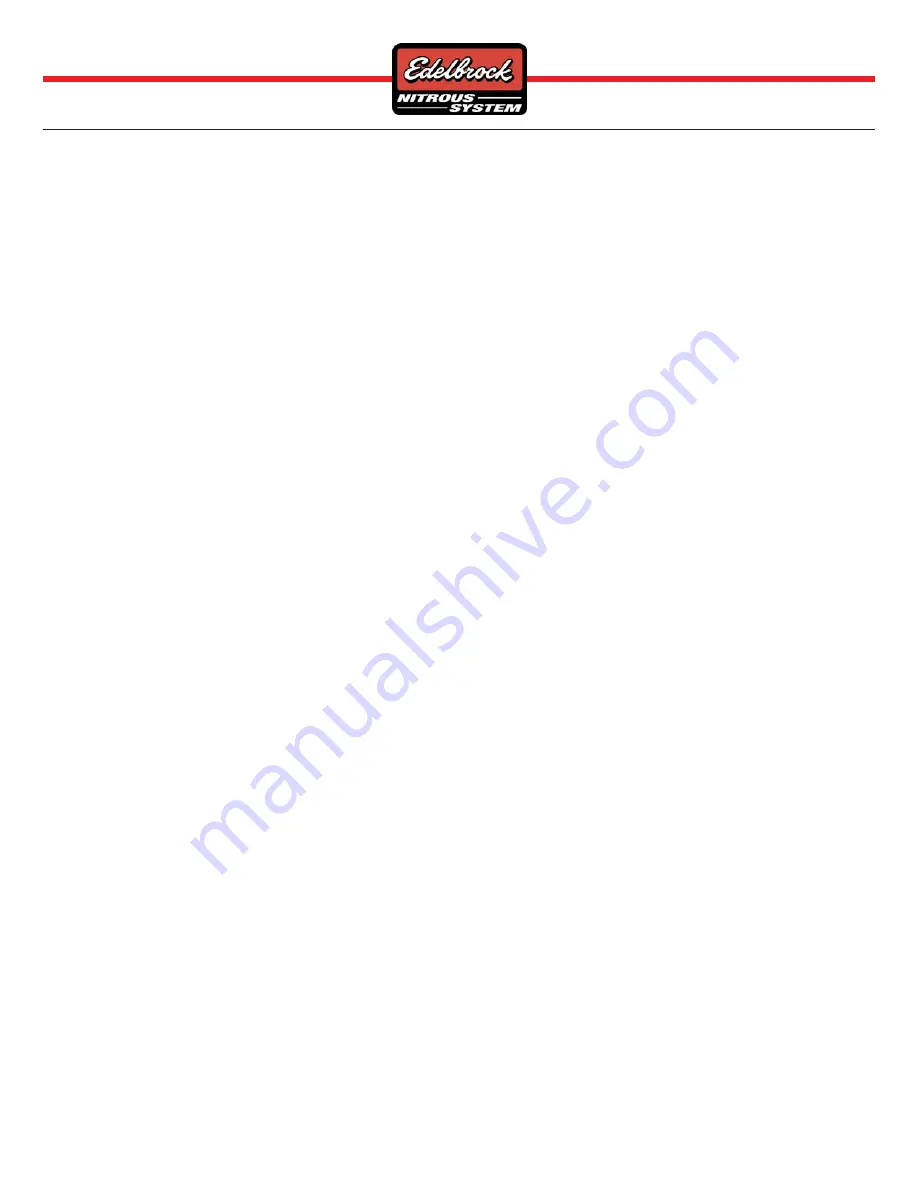
WWW.EDELBROCK.CO
M
©2007 Edelbrock Corporation
Brochure #63-70216
Page 14 of 16
Catalog #70216
Rev. 5/07 - DC/mc
6.0 Troubleshooting Your Edelbrock Nitrous System
How to use our Troubleshooting Flowchart:
The troubleshooting of a nitrous system is basic and straight forward. The symptom chart is divided by symptom, cause and action
required. Determine your problem (symptom), identify the potential problem (cause), and correct the problem (action required).
Symptom #1 -- There is no change in engine speed when the system is activated.
1.
Double check to see that the system is wired correctly.
a.
Compare wiring to schematic.
i.
Wire per instructions. See “
Wide Open Throttle Wiring Diagram” section.
2.
Restricted fuel line.
a.
Inspect fuel line for restrictions.
i.
Remove restrictions (kinks in rubber line, pieces of rubber hanging in flow path, etc.)
b.
Check fuel pressure.
i.
Without the nitrous system armed, the factory fuel pressure should be around 38-45psi. See your dealership.
Symptom #2 -- Change in engine speed when nitrous bottle valve is opened.
1.
Malfunctioning nitrous solenoid.
a.
Repair/Replace solenoid. See “
Solenoid Inspection and Maintenance” section.
2.
Contamination in nitrous solenoid.
a.
Remove and inspect the solenoid for dirt around the seat area of the plunger in the solenoid.
Symptom #3 -- Engine runs excessively rich when system is activated.
1.
Nitrous bottle valve not fully opened.
a.
Check bottle valve.
i.
Open valve fully.
2.
Nitrous bottle mounted improperly.
a.
Mount bottle properly. See “
Nitrous Bottle Installation” section.
3.
Plugged nitrous filter.
a.
Clean and/or replace the nitrous filter.
b.
See nitrous solenoid symptom #2.
4.
Low bottle pressure.
a.
Weigh bottle.
i.
Bottle should be 10lb. above empty bottle weight listed on bottle label when full. (15lb. will be more).
b.
Check bottle pressure.
i.
Maintain 80°-85° of bottle surface temperature.
5.
Check for correct jetting.
Symptom #4 -- High RPM misfire when system is activated.
1.
Excessive spark plug gap.
a.
Inspect spark plugs.
i.
Set plug gap per manufacturer’s specification.
ii.
Contact the manufacturer of your plugs for more information.
2.
Weak ignition/ignition component failure.
a.
Inspect ignition components.
i.
Replace worn components.
ii.
Upgrade ignition system to high performance high load capable ignition components.


































